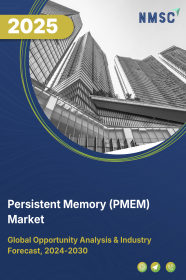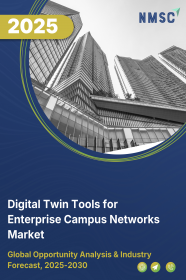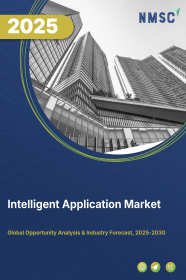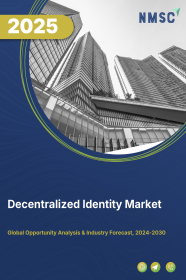
Persistent Memory (PMEM) Market by End-use (Consumer Electronics, Automotive, Enterprise Storage, Aerospace & Defence, Healthcare and Others)- Global Opportunity Analysis and Industry Forecast, 2020 – 2030
Market Definition
The Global Persistent Memory (PMEM) Market is expected to grow at a CAGR of 27.5% from 2020-2030.
Persistent memory is byte addressable, non-volatile and has low latency memory. It is considered beneficial as it dramatically increases the overall system performance and also enables the fundamental change in the computing architecture. Persistent memory is used in visualization, storage, database, big data, cloud/computing/IoT and artificial intelligence. Further, Persistent memory is supported by industry-wide software, hardware and platform ecosystem.
Market Dynamics and Trends
Rising demand for tablets and laptops is a major factor driving the overall market growth. This is mainly because users prefer gadgets with high speed and processing capability. In order to complement the overall processing power, manufacturers install persistent memory in the device.
In addition to this, the overall price of DRAM is increasing over the years owing to the imbalances between demand and supply. Rising prices of DRAM has resulted in inclination towards persistent memory. Several device manufacturers are focusing upon manufacturing persistent memory as it has high computing power compared to DRAM at a much lower price.
In addition to this PMEM does not have limited memory capacity like DRAM. Persistent memory is considered to perform better and is faster when compared to DRAM. The content in it remains protected when some unplanned crash happens. However, higher manufacturing cost of persistent memory is a major factor that is restraining the overall market growth.
Market Segmentations and Scope of the Study:
The global persistent memory market has been segmented on the basis of end-use application that includes consumer electronics, automotive, aerospace & defense, healthcare and others. Consumer electronics segment is expected to witness fastest growth during the forecast period as memory is considered as one of the major element while designing products. Geographic breakdown and analysis of each of the aforesaid segments includes regions comprisingNorth America, Europe, Asia-Pacific, and RoW.
Geographical Analysis
In terms of region, North America dominated the global persistent memory market in 2019 and is expected to display similar trend in the coming years. In North America, the U.S. is the major contributor and is also the early adopter of this technology. Moreover majority of the companies of automotive, healthcare and robotics industries that uses persistent memory are present in this region. In addition, the rapid innovation occurring in the automotive and robotics industries is triggering the overall growth of persistent memory market.
Competitive Landscape
Some of the major players operating in the market are Hewlett Packard Enterprise, Avalanche Technology Inc, Texas Instruments Inc., Everspin Technologies Inc., Cypress Semiconductor Corporation, Crossbar Inc., Western Digital Corporation, Panasonic Corporation, Samsung Electronics Co. Ltd, Intel Corporation Micron Technology Inc. among others.
New product development, strategic merger & acquisition, strategic investments, geographic expansion, product portfolio expansion are some of the strategies that are adopted by the companies in order to grab a large part of the market share in the coming years.
For instance, in 2018, Intel invested in persistent memory to create a new type of memory known as 3D XPoint, which has led to 22.5% increase in its overall non-volatile memory solution group’s revenue in the year of 2018.
In 2019, Intel launched Optane DC persistent memory DIMMS. Intel claimed that it would deliver breakthrough storage class memory capacity to the Intel Xeon scalable platform where the user can take benefit of cloud services, faster analytics and visualization among others.
Earlier in 2018, Netlist Inc., which is a provider of high performance modular memory SSDs announced regarding the participation in the 2018 Flash Memory Summit at Santa Clara. The Company aimed to demonstrate HybriDIMM™ which is a persistent memory at the Summit in order to grab more number of customer attention.
Key Benefits
-
The Persistent Memory market report provides the quantitative analysis of the current market and estimations through 2020-2030 that assists in identifying the prevailing market opportunities to capitalize on.
-
The study comprises a deep dive analysis of the Persistent Memory market trend including the current and future trends for depicting the prevalent investment pockets in the market.
-
The information related to key drivers, restraints and opportunities and their impact on the Persistent Memory market is provided in the report.
-
New technologies that are adopted by the organizations is also depicted in the report
-
The competitive analysis of the market players along with their market share in the global persistent memory market.
-
The SWOT analysis Porters Five Forces model and Regional Dynamics is elaborated in the study.
-
Value chain analysis in the market study provides a clear picture of the stakeholders’ roles.
Key Market Segments:
By End-use
-
Consumer Electronics
-
Automotive
-
Aerospace & Defence
-
Enterprise Storage
-
Healthcare
-
Others
By Geography
-
North America
-
U.S.
-
Canada
-
Mexico
-
-
Europe
-
UK
-
Germany
-
France
-
Italy
-
Rest of Europe
-
-
Asia-Pacific
-
China
-
India
-
Japan
-
Australia
-
Rest of Asia-Pacific
-
-
RoW
-
UAE
-
Saudi Arabia
-
South Africa
-
Brazil
-
Remaining Countries
-
Key Players:
- Hewlett Packard Enterprise
- Avalanche Technology Inc.
- Texas Instruments Inc.
- Everspin Technologies Inc.
- JVCKENWOOD (JVC)
- Cypress Semiconductor Corporation
- Crossbar Inc.
- Western Digital Corporation
- Panasonic Corporation
- Samsung Electronics Co. Ltd
- Intel Corporation
- Micron Technology Inc.
REPORT SCOPE AND SEGMENTATION:
|
Parameters |
Details |
|
Analysis Period |
2019–2030 |
|
Base Year Considered |
2020 |
|
Forecast Period |
2020–2030 |
|
Market Size Estimation |
(USD) |
|
Market Segmentation |
By End-use (Consumer Electronics, Automotive, Aerospace & Defence, Enterprise Storage, Healthcare, Others) |
|
Geographical Segmentation |
North America (U.S., Canada, Mexico) Europe (UK, Germany, Italy, France, Rest of Europe), Asia-Pacific (China, Japan, India, Australia, Rest of APAC), Rest of the World (UAE, Saudi Arabia, South Africa, Brazil, Remaining Countries) |
|
Companies Profiled |
Hewlett Packard Enterprise, Avalanche Technology Inc, Texas Instruments Inc., Everspin Technologies Inc., Cypress Semiconductor Corporation, Crossbar Inc., Western Digital Corporation, Panasonic Corporation, Samsung Electronics Co. Ltd, Intel Corporation Micron Technology Inc. |














 Speak to Our Analyst
Speak to Our Analyst





















